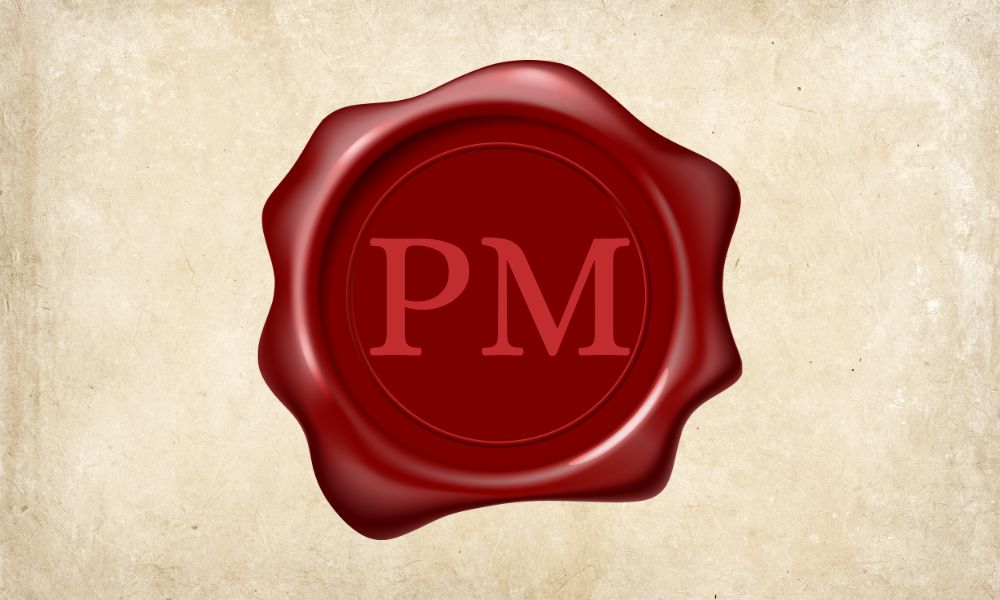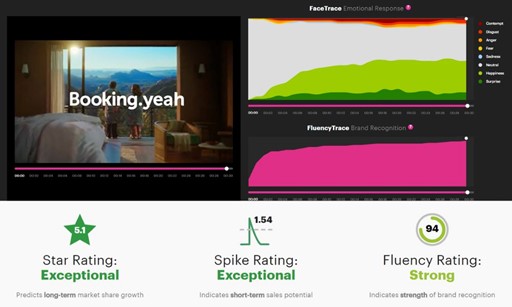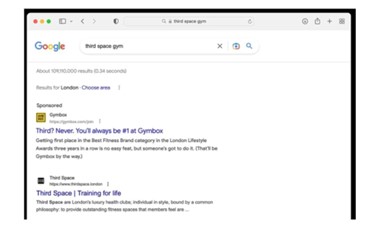
B2B marketing is sh*t, for the most part. For too long now, B2B organisations have focused on short-term numbers and underinvested in their brand. This approach has led to high agency churn, low brand recognition, and decreased overall marketing effectiveness. Something needs to change.
Cremarc, with the help of the Cremarc Innovation Hub, are leading the charge towards change. We need to experiment more. We need to be more creative. We need to build brands – not just get people to download an eBook before setting our sales hounds on them. Let’s drive demand with attention, emotion and memory. After all, B2B marketing is still targeting people – so let’s speak to people, not businesses.
There’s a clear new focus for B2B marketing in my eyes and that’s what I want to share. I believe the perfect progressive marketing mix is as follows:
- Always-on brand building
- Always-on availability
- Exhaustive ungated content libraries
- Intent-fuelled demand gen & sales outreach
What is progressive marketing?
Progressive marketing is what all B2B businesses should have been doing. It’s moving away from the pushy lead-gen, short-term, ineffective activation approach. It’s the holy grail of marketing – a harmony of exponential effectiveness gains over time, and short-term results.
It’s being available and easy to find when people are ready to buy from you. It’s telling people how incredible you are, but not force-feeding them whitepapers. It’s allowing prospects to take whichever crazy unique buying journey they want to take. It’s offering up supportive, educational content so that prospects can make informed decisions on who is the best in the market. It’s letting salespeople only reach out to individuals who are ready to have a conversation. It’s having incredible creative and copy that sticks in peoples’ minds. It’s being the product or brand people think about when they enter the market for buying.
Progressive marketing is everything marketers want, but exactly what they’ve failed to explain to the rest of the business. So today, I’ll make it easy and explain it for you. This is my progressive B2B marketing mix…
What is always-on brand building?
This is all about reaching the maximum obtainable market, grabbing their attention, and having a memorable proposition.
Ehrenberg-Bass research suggests that around 95% of the obtainable market isn’t in the market most of the time – so only 5% would even consider buying a product or service from you now. Brand-building advertising drives long-term growth and makes shorter-term activation campaigning efforts more effective.
If this element is executed accurately, the full obtainable market knows about your brand, and remember you at category entry points (CEP).
A great example of a brand building campaign that aired across multiple channels and scored incredibly high on the System1 ad testing database is Booking.com’s “Find the perfect holiday home for you” campaign with Melissa McCarthy.

This targeted the CEP of looking for a place to stay while on holiday – probably the most saturated CEP. “Hotel – Trivago”, “Belong Anywhere” (AirBnB), multiple companies have tried to position themselves as the one you think of when you suddenly decide you want to go on holiday, but you don’t quite know where yet. This is a key part of the progressive marketing mix because it gets you ahead. You bypass the BoFu battle of SEO and Paid Search because they flock directly to you. Your brand building activity is vital because it gets you upstream of the performance marketers.
How always-on BoFu availability plays into it?
Equally as important is the BoFu battle. If alternatives and competitors have giant budgets and block SERPs with their ads and snippets, you won’t be found. Being found is made easier when you’re known in the first place, and remembered at CEPs, but it also helps reinforce your brand’s credibility. If you appear through educational searches, and then you reappear when the high-intent conversion search occurs, you’re more likely to be chosen. It’s like when you walk into a supermarket, and you’re looking for ketchup, you know you’re going to go for Heinz already, but if Hellmans is on the end of the aisle with a big ‘Half price’ label underneath it, your choice may change.
Your always-on BoFu availability is all about being available when the 5% of the market is ready to buy from you. You need to have the right BoFu channels covered to collect in-the-market consumers when they are in ‘buying mode’.
Having a website doesn’t cut it. Having an optimised website, that ranks organically and is boosted with paid search to clog the SERP gaps, is the minimum requirement for availability. But think wider than digital. Where else should your brand be present and available?
Your marketing efforts capture people at the top of the funnel and then push them down the funnel. But that’s not to say people aren’t already at the bottom of the funnel, though. Some people skip to buying stage. Some people are pushed down the funnel by a competitor and you can swoop in at the last minute to collect that sale. Some people bounce back and forth between ToFu, MoFu and BoFu. There’s no rhyme or reason, and definitely no pattern across all consumers. All we know is, we have to have everything, everywhere all at once to ensure we cover the full marketing flywheel – yes, you head me right – ‘marketing flywheel’. If you want to read about why the archaic marketing funnel is DEAD, read my article here.
The point here is to think intelligently about how and where to be available. Think creatively about when to appear. How can you make yourself present at a CEPt? Your other marketing and advertising efforts make you memorable and positioned for CEPs. Always-on BoFu availability is making yourself available when the other elements pay off.
This is a great example of how Gymbox is available when a consumer is searching for a competitor brand, a.k.a they swoop in at the last minute and bypass all the hard work that ThirdSpace have put in.

The impact of a broad, ungated content library on brand building
How do you grab the attention and improve mental availability? Incredible content that’s so good it resonates like a Garageband guitar with the echo setting ramped up to eleven.
Many B2B marketers create eBooks and solution sheets and think that this type of content helps them in their marketing efforts. Truthfully though, this type of content only helps to secure customers who are already ready to buy – and a short and snappy explainer video with a shareable ROI tracker document for the wider buying committee could do this job better.
Content is more than sales, it’s for reach, consumer trust, and education. Create branded content that is informative to get your brand in front of the right people. But don’t commit the cardinal sin of turning it into an elevator pitch. You don’t need to end blogs with a paragraph about your products or services. Produce excellent content, connected to your memorable and distinctive brand. Then, the right people will come.
Additionally, content helps to fuel your brand-building activity. You need something to promote, you need somewhere to send people, and you need a way of positioning yourself as a thought leader in the space – to drive perceived market share.
Don’t chase people up after they read the content – make it excellent and they’ll convert of their accord when they are ready.
A variety of content means you can be available on more channels when consumers are researching. For example, video content opens avenues for organic social, YouTube search, and forums. Audio content creates a chance to share snippets on socials, guest and share on wide-reach audio platforms for better availability and cater to busy individuals that only have time to consume content while they’re commuting or exercising. Be accessible.
How to utilise intent-fuelled outreach & nurturing
Gone are the days of cold calling someone who downloaded a whitepaper. It’s an outdated methodology. Unfortunately, many B2B marketers are still stuck in this vicious cycle, though.
We can now measure intent, and drive consumers through the freedom gate with nudging and nurture – rather than pushing them through a gate before they are ready with a pushy salesperson calling them.
Tools like Zoominfo and Bombora can accurately measure whether people in your target locations are ‘in the market’ and researching at buying stage. If this is the case, you need to move quickly with an email or some ABM air cover advertising. Salespeople should contact these individuals with intent, creatively. No more quick phone calls or LinkedIn DMs. How can we nudge people through the gate?
Don’t default to digital – think physical too. Can you choose target accounts that have hit an intent threshold and market to them with meaningful handwritten letters and parcels? Can you find out their commute to work and buy a bus stop ad? Don’t just think about easiness and efficiency – think about effectiveness.
Salespeople still heavily have a role to play in prospect engagement, but they should only be speaking to the high-intent and ‘in the market’ individuals, and hand raisers. Otherwise, you can put people off. It’s archaic to let the sales hounds loose on someone who read a whitepaper two days ago. Track them, know them, nurture, nudge, and wait.
What your board is going to ask you:
Will this still return short-term results?
This methodology focuses on generating short-term results and tangible sales, but it’s not obsessed with the short-term quick wins. After a couple of months of changing to this approach, it should return consistent enquiries and sales.
Why shouldn’t content be gated?
It’s better to get valuable content in front of someone’s eyes than to deter people with a set of form fields. It also applies the psychological theory of costly signalling and makes users trust you more if you’re giving away amazing content for free.
Is there still a need for BDRs?
Yes, as the approach to high-intent ABM targeting and nurturing includes outreach to decision-makers when the company is in the market. This is a manual process that extends beyond marketing. Sales teams need to be ready to give demos, answer questions, and support prospects through the conversion process. The change here is that the don’t overstep their mark and jump in too early.
Does PPC still need budget and effort if we’re investing in brand?
Google Search Ads and Bing Ads will still be a massive part of the always-on BoFu availability, and Google Display Ads will be a part of the brand-building layer. LinkedIn Ads will also be heavily utilised for the brand-building activity. All PPC advertising will still be required as part of the full set-up.
I’m not going to end this blog with a sales pitch because that would be hypocritical. But unfortunately, our website is built so that there is a big below the blog that tells you to get in touch. If you’re genuinely ready to speak to someone, go ahead. If you’re not, take this progressive B2B marketing approach on board, level up your marketing effectiveness, and come and have a chat in 6 months’ time if you need a hand.
Wondering how to restack the odds in your favour? Listen to our B2B Tech Marketing podcast!
In this episode, Gabe speaks with our CEO Gary on how the odds are stacked against the B2B Tech marketers of today, and what can be done to combat this through shifts in mindset to realign marketing with the buyer, and starting with a foundational layer of core activity spanning self-serve content and integrated digital marketing.